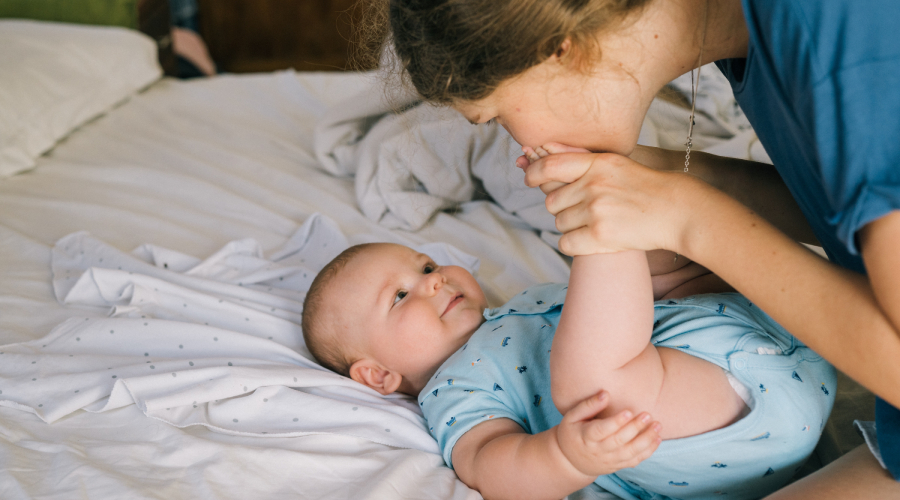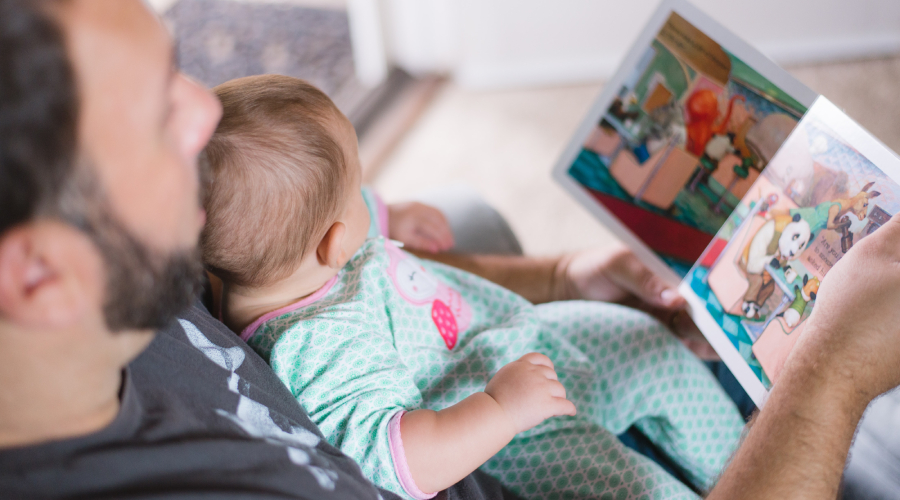settings
children
With Famly since
Working in child care, you’re often the first person in a child’s life that they bond with, outside of their own parents.
In other words, the bonds you share with the children in your care have more lifelong impact than most other relationships in children’s lives.
But forming those healthy early attachments can be complex. It takes a lot of time and planning to understand and meet the needs of infants in your care. Could there be certain things we should do more of? Or things we do with the best intentions, that don’t actually work that well?
When it comes to bonding with babies, there’s a whole school of knowledge to make sense of it: Attachment theory.
You’ve probably heard of attachment theory before — but translating scientific theory to the daily ruckus of your early years environment is something else. So in this article, we’re going to get into how attachment theory looks and feels on the day-to-day in your classroom. We’ll talk about why exactly it matters so much, and how you can use attachment theory to form even stronger bonds with the little ones.

What’s attachment theory all about?
Attachment theory is the science of how babies bond with their caregivers.
Of course, attachment theory doesn’t dictate how that happens. Babies have been bonding with their caregivers since way before we had a name for it. But attachment theory helps us understand the patterns and influences behind how that bonding process happens, so that we can help children get the healthiest start to life. Attachment theory suggests that children’s bonding experiences are the most influential in their first year of life, so we’ll focus on that first year in the scope of this article.
At its core, attachment theory says that infants need to form strong bonds with one or two central caregivers, in order to have a solid emotional base that prepares them for the rest of life.
This bond is a matter of quality over quantity: The healthiest attachments don’t always form with whomever spends the most time with a baby, but who responds best to a baby’s signals. In infancy, this means not only being sensitive to babies’ needs, but also consistent in responding to those needs.
Why does attachment theory matter so much for children?
You could think about attachment as one of the very first steps on the pathway of child development.
Our first caregivers teach us how to use social cues, which is how we learn to process and communicate our own needs. But also, having these secure attachments gives us a safe home base as we venture out into the world. Infants and toddlers need someone to return to with questions, and to help them feel secure and supported as they explore their own independence.
To put attachment theory in the larger context of child development, here’s how those first attachments shape our growth later on:
- Cognitive development. Attachment shapes our perception of who we are, who others are, and how we relate to each other.
- Emotional regulation. When we feel emotionally secure in our first attachments, we’re better able to process and share big emotions as we grow up.
- Exploratory play and curiosity. Having a strong relation with a caregiver means we’ve got a secure foundation to start exploring the world around us.
- Building social skills. If our first personal relationships are warm and nurturing, we’re more motivated to welcome new people into our lives as we grow up.

First year of life, and four stages of attachment
Every child develops attachments in their own way. But as our newborn brains develop, the patterns of how we form attachments get more complex.
Our current understanding of attachment theory suggests children go through four distinct phases of attachment during their first year of life. This is the most critical time window for babies to form these bonds, and build these foundational relationships.
Again, within the context of child care, this means that you’ve got to think the most about attachment with children under one year old.
During that first year, you may notice that a few months can make a big difference in how babies approach attachment. Here are the four key phases of attachment children go through in their first year:
- Asocial (0-6 weeks old): Newborns won’t recognize a specific caregiver at this age, but will respond well to affectionate gestures, like gentle touch, soft voices, or being held.
- Indiscriminate attachment (6 weeks – 7 months old): At this stage, babies enjoy human company, but respond about equally to any caregiving adult. Babies may get upset if they get separated from their caregiver, or if they don’t know where they are. Around this time, babies start learning to identify and remember specific faces.
- Specific attachment (7-9 months old): By now, babies start bonding with a specific caregiver. They might show anxiety when they’re around unfamiliar people, or sadness when separated from their special person.
- Multiple attachment (10+ months old): At this point, babies start to recognize and attach to other important people in their lives — such as siblings, grandparents, or child care workers.
What does healthy attachment look like in child care?
It’s hard to tell you what good attachment looks like in this short article.
Evaluating the quality of children’s attachment in any definitive way requires specialist training. It’s often done in a controlled setting, where children’s reactions can be very carefully observed. The daily hubbub of your early years setting might not be the place for that.
But beyond that, we probably shouldn’t focus too much on condensing children’s early emotional bonding into a numerical score. Instead, we can use attachment theory to help remember the importance and complexity of babies’ attachments. It reinforces the immense importance of the work you do, and underlines how critical it is that we show extra attention to the youngest ones in our care.
Within child care, here are some reflection questions that can help you think about how you and your team are helping babies form those first attachments:
- How responsive is the practitioner to the child’s emotional needs and needs for safety?
- How effectively does the child signal distress?
- Does the caregiver demonstrate their ability to recognize children’s needs and soothe them when needed (e.g., when distressed)?
Of course, an infant’s behavior in child care isn’t always an ironclad indicator of their attachment. Children’s age, developmental stage, home life, and of course individual personality can play a part in how they bond with you.

How to apply attachment theory in your child care setting
The good news is, supporting healthy attachment doesn’t need to be very technical or complex. Within child care, simply giving children consistent, attentive care is enough.
Here’s how you can help support healthy, nurturing attachments with the infants in your care:
- Show enthusiasm for every child. Greet children and their parents by name in the morning, and show the child that you’re happy to see them. When it’s time to say goodbye in the afternoon, little rituals like a daily hug or a quick song can mean a lot to children.
- Make time for personal connection. Talk to infants about the things you see around you, or what’s happening in the room. Be sure to make eye contact with the baby, and to mirror their smiles and laughs when they do so.
- Learn how individual babies express their needs. Is that a “I’m tired” cry or a “I’m hungry” cry? An arched back, tightly-closed eyes, curled fists, crying, or active movement can mean a lot of different things. It’s up to you to do a bit of detective work to learn how each infant in your care communicates their needs.
- Pay attention to babies’ favorite sensory inputs. Some babies might like a soft touch or tickling, while others might prefer soft music or being rocked back and forth. Learning what works for each individual infant helps attachment by demonstrating to the child that their needs and preferences are being met.
The big ideas
Free downloadable Early Childhood resources
Explore our library of longer-form books, guides and editable templates - all free to download.
Explore free resources









